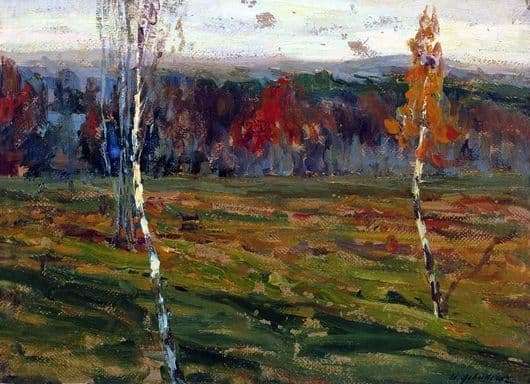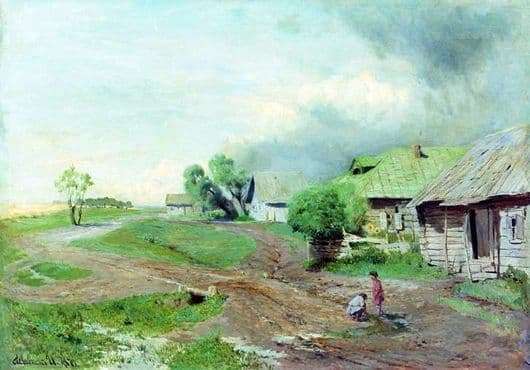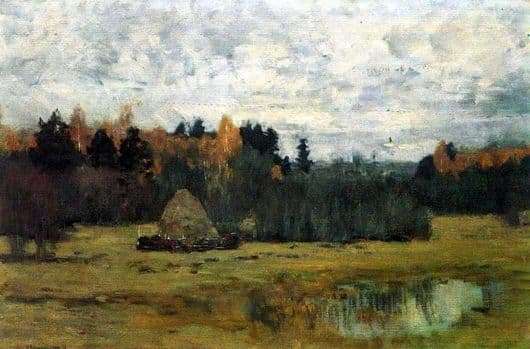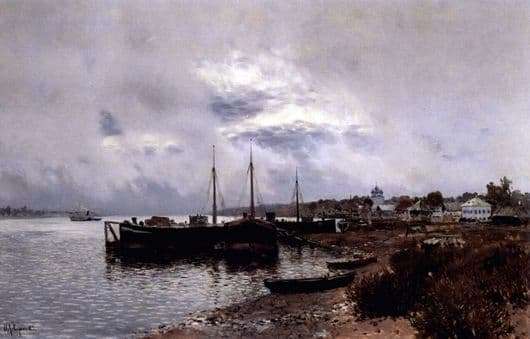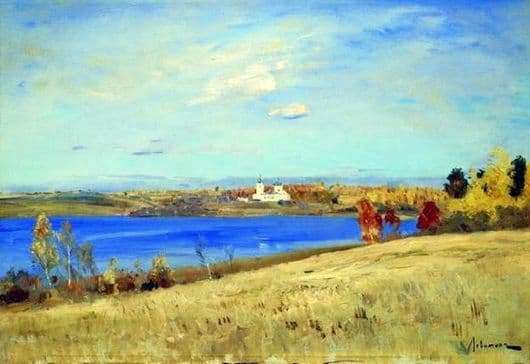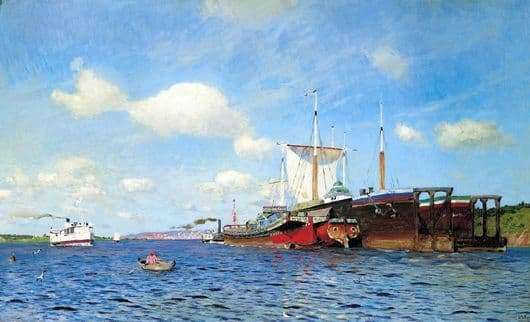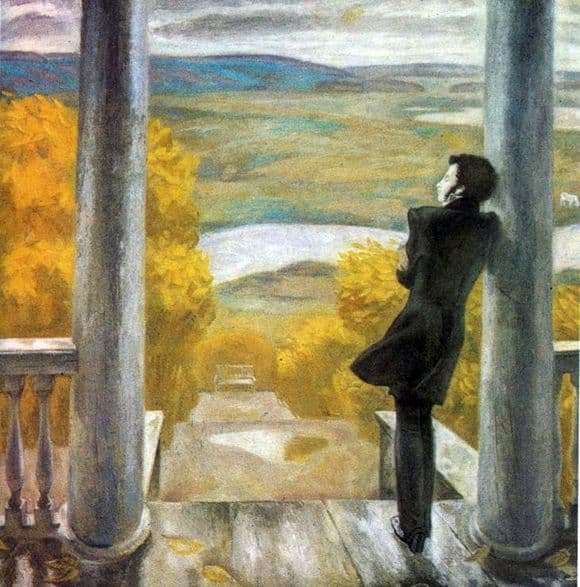
This painting was painted in 1899. It is almost the last major work of a great artist.
Before the audience appears the view from the cold autumn sky. With gray tattered clouds. Dense Khmara spread already half the sky. One feels all over the approaching thunderstorm.
Oblique rain streams cover all visible space. The wind tears the grass darkened from bad weather and develops it together with yellowing fresh sawdust. Gusts of wind are so strong that thin birch trees bent to the ground.
The same bent silhouettes of trees and in the background. The stumps of the trees and the firewood neatly stacked in the woodpile remain calm to everything that happens. A cold downpour also waters them. And they look sad and lonely.
The first Russian landscape painter was the first to manage to convey the sad power of the immeasurable distance of the Russian weather. The viewers see in the picture an increase in the narration through the use of painting and composition means by the artist.
Here there is an unusual plot and expression of interpretation. The picture contains the basic tone in heavy, cold red tones. In the work used and warm colors, but the artist specifically left them muffled.
The viewer appears randomly scattered, thanks to the broad brushstrokes, grass, sawdust. And from all this it seems that it is all scattered by the wind that has flown in from nowhere. The image of birch on the horizon and the sky was done with light strokes. Dark, almost that black tones, as well as light gray, are used for its image.
The picture can be called a panorama because of its elongation and bending of trees. In 1899 there was a traveling exhibition, and this work was exhibited there. The picture turned out with its nervous, expressional interpretation and plot, so she was immediately noticed.
Description of the painting by Isaac Levitan “Storm. Rain”
